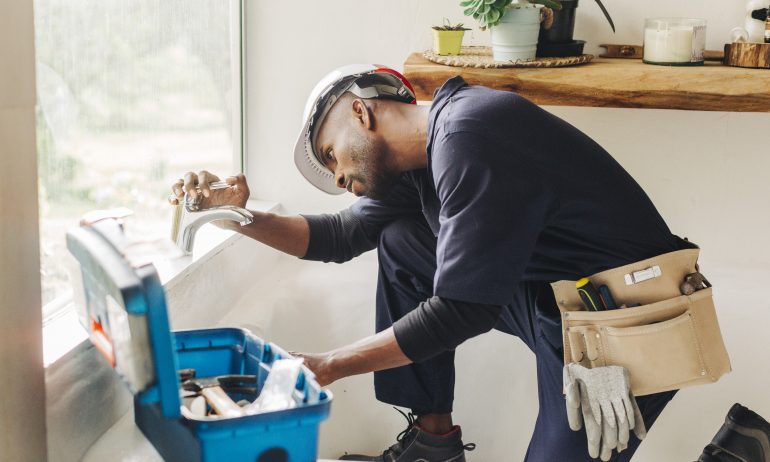Does a Home Warranty Cover Plumbing?

Many or all of the products featured here are from our partners who compensate us. This influences which products we write about and where and how the product appears on a page. However, this does not influence our evaluations. Our opinions are our own. Here is a list of our partners and here's how we make money.
Plumbing projects are among the most expensive — and stressful — repairs that a homeowner can face. Fixing a sewer main or septic tank can cost thousands of dollars, and even a smaller project, such as a garbage disposal repair, can cost hundreds.
Many home warranty plans offer plumbing coverage, but only in a narrow range of circumstances. Before committing to a plan, read the fine print carefully. Popular review platforms — such as the Better Business Bureau, Consumer Affairs and Yelp — can also tell you how helpful providers were with other people's plumbing problems.
Plumbing coverage specifics
The National Home Service Contract Association indicates that most home warranty plans cover interior plumbing.
A sample contract from American Home Shield — a major national provider that operates in every state except Alaska — shows that it offers coverage for the following:
Leaks and breaks of water.
Drain, gas, waste or vent lines.
Toilets and related parts, including toilet wax ring seals.
Faucets, showerheads, shower arms, and valves for showers and tubs.
Diverter valves, angle stops, risers and gate valves.
Hose bibs.
Basket strainers.
Permanently installed sump pumps (this would cover damage from ground water only; coverage for flooding from a nearby body of water would require flood insurance).
Built-in bathtub whirlpool motor, pump and air switch assemblies.
Pressure regulators.
Expansion tanks.
Sewage ejector pumps.
Sink, bathtub, shower and toilet stoppages.
Mainline drain and sewer stoppages, as long as the clog is within 100 feet of an access point.
Lateral drain line stoppages, as long as the clog is within 100 feet of an access point.
Budget warranty provider Select Home Warranty lays out similar coverage in its sample contract, including line leaks in water, drain, waste or vent lines; toilet bowls and tanks; and toilet flushing mechanisms, angle stops and risers.
Plumbing coverage exclusions
Home warranties exclusively cover damage caused by normal wear and tear, which means that they don’t cover damage caused by external factors, like freezing water or root obstruction.
The location of the damage also impacts your warranty claim. For example, your warranty may not cover a stoppage if the obstruction is more than 100 feet from an access point or if it’s outside your home’s main foundation.
Exclusions vary by provider, so you’ll want to carefully evaluate this section in any contracts that you’re considering. Some providers will exclude elements such as water softeners, slab leaks or polybutylene pipes, or areas like the sink, bathtub or shower.
» MORE: What does a home warranty cover?
Warranty costs
Plans typically cost from $300 to $800 per year — though they can cost more — and you’ll be responsible for a service fee (usually from $55 to $125) each time you need a professional to assess an issue. You’ll pay this fee even if the company rejects your claim.
You may also pay additional costs if you max out the warranty company’s contribution. American Home Shield’s sample contract, for example, indicates that it will pay up to $1,000 to finance the “access, diagnosis, repair, or replacement” of plumbing if the issue is accessible only through concrete, and that customers will have to cover any costs beyond that.
Alternatives to home warranties for plumbing issues
Some plumbing issues may be covered by your homeowners insurance. Insurance covers damage caused by sudden, unpreventable issues, like fires or severe storms. This means that everyday wear and tear won’t be covered the way it is with a home warranty. Unlike home warranties, however, your homeowners insurance may cover damage caused by climate-related problems like freezing pipes — provided that you’ve taken steps to otherwise properly maintain them.
Because so many plumbing problems are related to maintenance and can be so expensive to fix (even with a warranty), it’s best to proactively take appropriate care of your pipes and plumbing system. Routinely checking for leaks and inspecting your drains can increase your likelihood of catching issues early, before they become expensive headaches.


